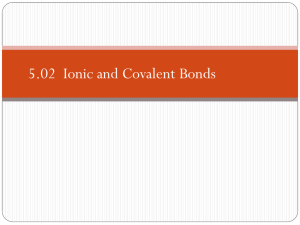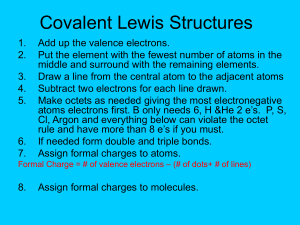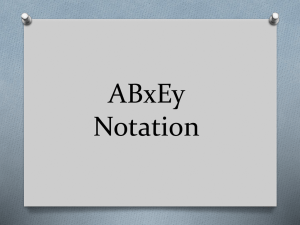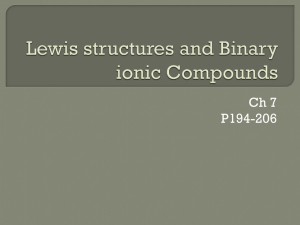Final Review Answer Key
advertisement
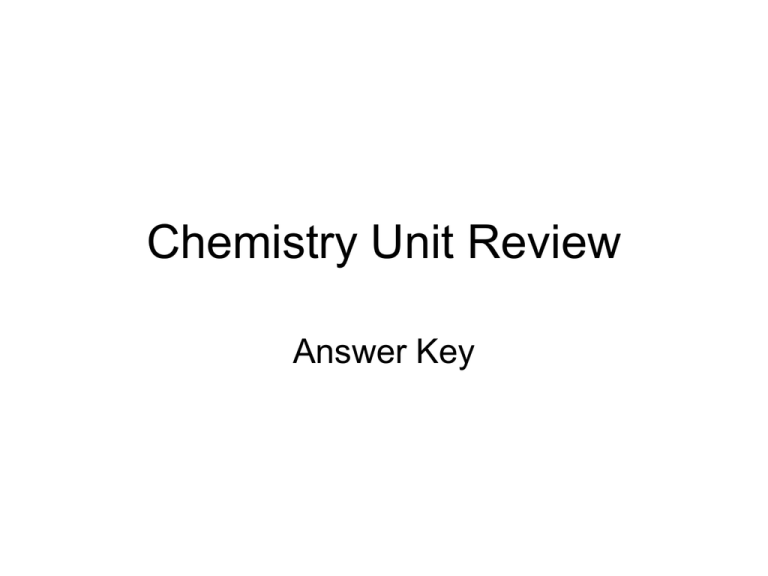
Chemistry Unit Review Answer Key Structure of an atom Electron Negative Proton Neutron Positive Neutral » 2. What element is this atom? How can you tell by looking at the diagram? Lithium; The element has 3 protons which is the same as the atomic number on the periodic table. Structure of an atom con’t. 3. What is the mass of this atom? 7 How can you tell by looking at the diagram? The mass of an atom is found by adding the protons and neutrons together. This atom has 3 protons + 4 neutrons. 4. Which subatomic particle has the smallest mass? electron 5. What happens to this atom when you… a. Remove an electron? It becomes an ion(cation) b. Remove a neutron? It has less mass and is called an isotope c. Add a proton? It becomes Berylium 6. How could you change this atom into helium? You would have to remove 1 proton Periodic table trends and organization 1. Why are He, Ar, and Kr all un-reactive with other elements? Their outer shells are either full or have 8 electrons making them very stable 2. Give a list of three elements you expect to have similar chemical properties, and explain why. Could be any 3 elements in a group(column); all have the same number of valence electrons giving them similar properties 3. What are valence electrons? The outermost shell of electrons; can be 1 to 8 of them 4. How do valence electrons determine the chemical properties of an element? Explain why using at least two examples. Valence electrons are what determines the reactivity of an atom as well as what type of bond it is most likely to form. Ex: Sodium has one valence e-, so it is very likely to react to get rid of this electron. Neon has 8 so it is very stable. Periodic table trends and organization con’t. 5. Fill out the following table. Element Group # Period # Atomic # Atomic Mass # of Protons # of Neutrons # of Electrons # Valence Electrons # Energy Shells Be 2A 2 4 9.012 4 5 4 2 2 Cl 17 3 17 35.45 17 18 17 7 3 Kr 18 4 36 83.79 8 36 48 36 8 4 6. Categorize these elements as either metals or non-metals. Carbon Sodium Calcium Silver Hydrogen Iron Oxygen Fluorine Metals Sodium, Calcium, Silver, Iron Non-metals Carbon, Hydrogen, Oxygen, Fluorine Ions and isotopes 1.Fill out the table below for isotopes of carbon. Isotope # of Protons # of Neutrons # of Atomic Electrons Mass Carbon-12 6 6 6 12 Carbon-13 6 7 6 13 Carbon-14 6 8 6 14 2. How do you change the charge of an atom? By adding or taking away electrons from the outer shell. Chemical bonds 1. Identify the following substances as either an element or a compound. Substance NaOH Element or Compound? Compound CO Compound Co Element CuSO4 Compound Cu Element 2. How many elements are in a molecule of CaSO4? How many atoms total? 3 Elements and 6 total atoms Chemical bonds con’t 3. What is the chemical formula for this molecule? How do you know? NO2 ; There are 2 atoms of oxygen and 1 atom of nitrogen. The nitrogen comes first because it is in the group before oxygen. 4. Why do different atoms bond together to make compounds? Atoms bond together to satisfy the full outer shell or 8 valence electron rule which makes them more stable. 5. Describe what happens to valence electrons in ionic bonding. In an ionic bond one atom gives up valence electrons making it a positive cation while the other takes in those valence electrons making it a negative anion. 6. Why do negatively charged and positively charged ions combine to form compounds? The opposite charged atoms are attracted to each other and they form a weak bond. Chemical bonds con’t 7. Write the chemical formula for the following compounds. Also, write the ions and their charges for each compound. Name Positive charged Ion (include the chemical symbol and charge) Negative charged Ion Chemical (Include the chemical Formula symbol and charge) Ex: Magnesium Iodide Mg+2 2 I-1 MgI2 Potassium Bromide K+1 Br-1 KBr Calcium Chloride Ca+2 Cl-1 CaCl2 Magnesium Oxide Mg+2 O-2 MgO 8. Describe what happens to valence electrons in covalent bonding. Valence electrons are shared by each atom in a covalent bond. Chemical bonds con’t 9. Write the formula for a covalent bond between carbon and Chlorine. CCl4 10. Classify the bonding in each compound as covalent or ionic. Carbon dioxide (CO2) Aluminum sulfide (Al2S3) Silicon dioxide (SiO2) Potassium bromide (KBr) Sodium chloride (NaCl) Magnesium oxide (MgO) covalent ionic covalent ionic ionic ionic

